We finish up our story of Bursledon Brickworks Museum volunteer Bob Palmer, with a quick…
Cactus collector makes a point: Part two
2.
Cactus collector makes a point: Part two
When we first met Cliff, we learned of his obsession with collecting Cacti, and where he has travelled in his quest to find and document the love of his life. This time around we talk about some personal projects and, quite literally, the growth of his collection.
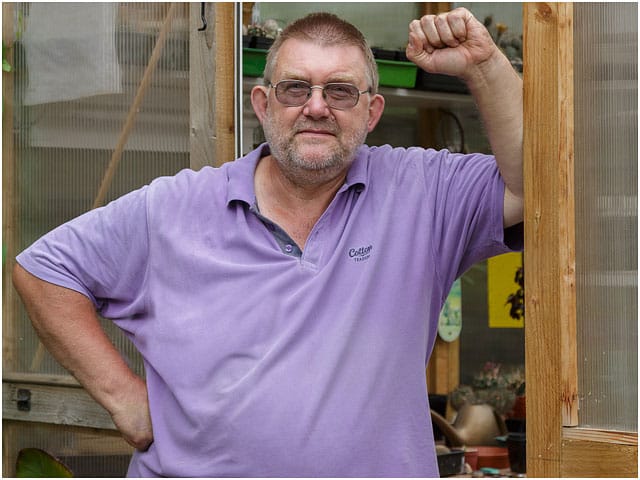
What time of year do you visit the locations?
We tend to go during the flowering season. Generally, we go to the South when it’s Autumn for us, spring for them. For one thing, it’s a lot cooler, but also, from a photography point of view, the plants look a lot more attractive.
Any problems with the spines in cacti; are there any that are poisonous to us?
Not with cacti. There are some of the other succulents that have some strong skin irritants, but in general, no. Apart from the obvious thing of avoiding the sharp end, there’s nothing to give any problems. I tend to favour shorts rather than the long trousers that my colleagues wear. There are a few stingy things that I always manage to walk into. In March I fell over, backing up to let my friend Ian take a photograph of a particular plant, and ended up sitting in a very large cushion cactus. I think the final spine came out two months later!
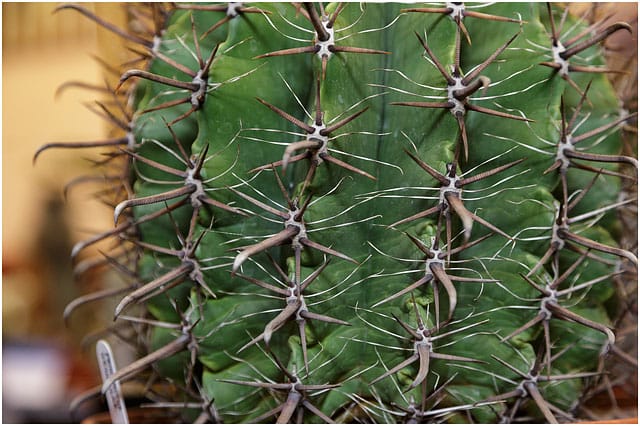
… and ended up sitting in a very large cushion cactus
Ouch.
More of a shock than a pain, but of course the ignominity of it, was having to ask those around me to remove the spines [laughs]. One of the hazards unfortunately.
Is there a theory on why cacti developed spines?
It’s thought that, by natural selection, they grew them to avoid being eaten by animals. However, there are some cacti that don’t have any noticeable spines at all. A lot of them tend to be ground huggers and they have what’s called a contractile root. They’re unique in that, during dry times, the top part of the root contracts and pulls the body underground, covering it with dust. When it rains, the root expands and the body returns to the surface, produces flowers, sets seed and then, when it gets dry again, and as they dehydrate, back they go. It’s a survival tactic. The plant has done what it has evolved to do, flowered and produced seed. Then it will sink back down below the surface, and repeat the same thing the following year.
during dry times, the top part of the Ariocarpus root contracts and pulls the body under ground.
![cacti03 [L] Coryphantha borwigii. [R] Hamatocactus haematacanthus](https://www.stevehughesphotography.co.uk/wp-content/uploads/2014/06/cacti03.jpg)
Is the British Cactus and Succulent Society a one size fits all?
No, there are quite a few sub-divisions within the BCSS. People can specialise in a specific genus or group if they wish, but I’m a generalist.
The principal objectives of the BCSS are to promote the study, conservation, propagation and cultivation of cacti and other succulent plants.
How many members does the Portsmouth and District branch of the society have?
We were talking about this only the other night. We currently have thirty-two fully paid up members. Which is a far cry from when I joined back in 1977, when there were one hundred and thirty one. The highest it’s ever been. Exactly the same thing has happened with the Horticultural Society. As people have acquired greater disposable incomes, due to the increase in wages and the fall in manufacturing costs of goods overall, travel has become more accessible. The knock-on effect is that societies, such as ourselves, have fallen out of the limelight, because people can travel and discover the plants for themselves. As a society we’re doing our damnedest to create the interest and bring in younger members, but, at the moment, as the old guard moves on, there are not enough people joining to replace them.
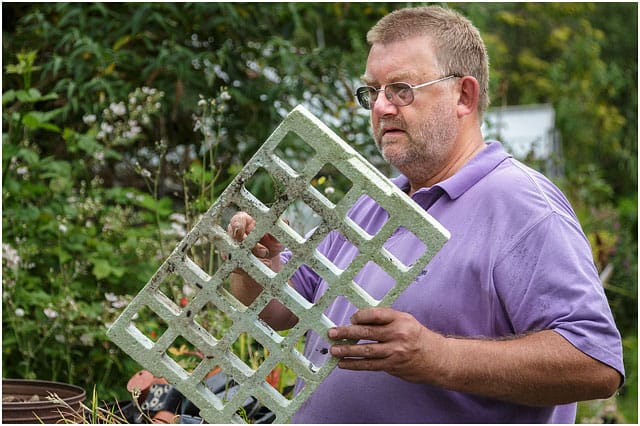
I assume that there is a membership fee?
It’s £15 a year. For which members get four editions of our excellent journal, Cactus World, can access a very active website forum, and the opportunity to meet other members at regular local branch meetings. As a member of the BCSS, although you are affiliated with a local branch, you are free to visit any other branch in the country. We’re a registered charity and we do all our own fund raising etc.
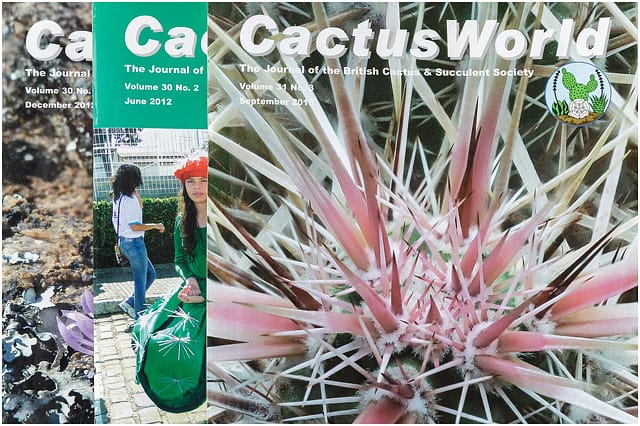
Have you been featured in the magazine?
I’ve contributed one small piece, which was a follow up to an article, written by a chap in Brazil, about a conservation project, started around 2002/2003 to protect the type locality of a particular cactus. The project went viral because, when we went to visit in 2009, it had gone nuts. The local community had really embraced the whole idea of conservation and had fenced the entire area off for protection. It was a former quartz gravel quarry on a hilltop that was ideal as a supply for the building industry, especially as it was free. The plant that was indigenous to the area was gradually dying out. There are two locations for it, but, overall, the population had been decimated. So a friend of ours in Brazil, and the conservation group here in the UK, got their heads together and managed to persuade the local authority to make it into a conservation area. They put up a big sign to say that the BCSS had contributed to its preservation. The BCSS contributed by supplying the materials to erect the new fence surrounding the entire, and by no means small, site.
The project went viral because, when we went to visit in 2009, it had gone nuts.
Anyway, when we went there seven or eight years later, we found that they had built a reception area, a research centre and a library. Apparently, they take kids up there, as part of their environmental studies, to show the effects of conservation in action, which is brilliant.
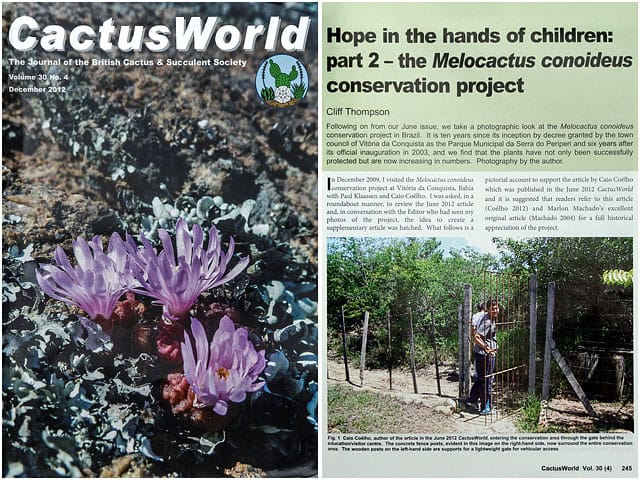
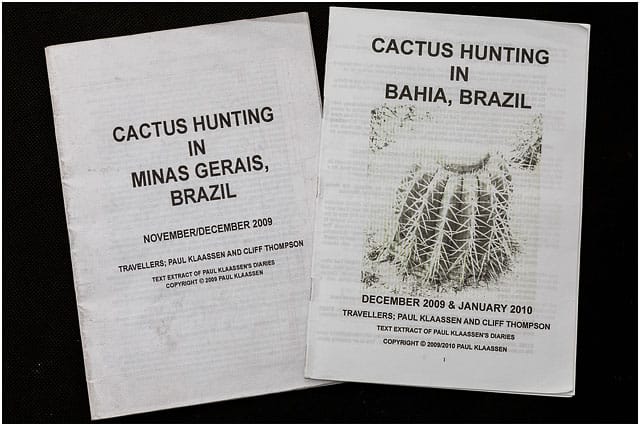
You must be very proud to have been part of that.
Yeah, it’s good to know that we have contributed to that learning resource as well. But it’s worked a treat, and there are other examples around the world, in both cactus habitats and succulent habitats, where conservation projects have sprung up. And they are respected as well. In South Africa they just shoot people pilfering succulent plants. Well, apparently, they did once. What they manage to do is get the farmers on-board. Just like in America, the farms in South Africa are huge. So the farmer doesn’t mind if ten acres are fenced off, or whatever. It’s said that a farmer caught some guys in the protected area once, not natives either, and let loose with his shotgun. I don’t think that it was close enough to hit them, because of the range, but it was effective enough to scare them off.
In South Africa they just shoot people
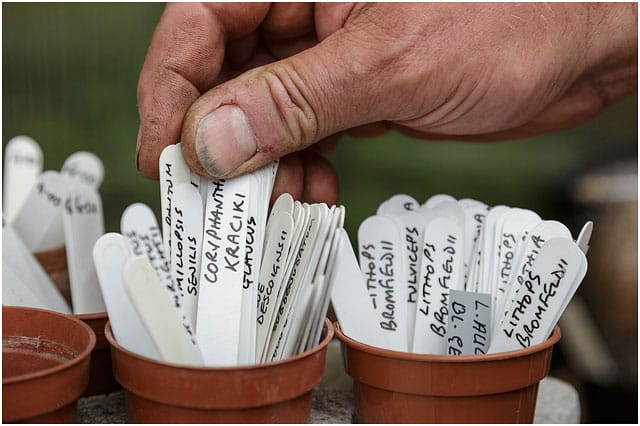
So you get the occasional thing like that, but, generally speaking, these areas are respected. The conservation message has certainly got out there. But, of course, in destitute areas, forget it. If you have a square kilometre of green and you’re trying to feed your thirty goats, and that’s all you can live on, they’ll cut the fence down and go straight in.
Are there any specific conservation projects that the Portsmouth branch are involved in?
No, it’s a national thing. There’s a conservation committee, which considers submissions from people wanting to undertake studies. It’s not just conservation areas, they also ask people to go out and check on the populations of plants. Of course, they have to be given funds to do it so that comes, if appropriate, from the society.
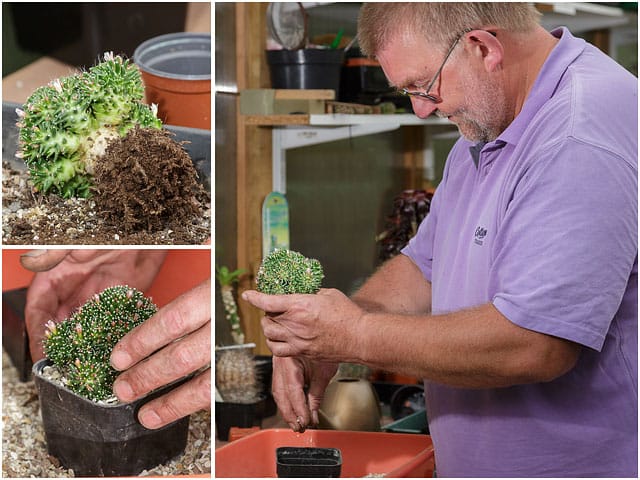
Is there anything that the local branch would like to promote?
The main thing for us, and the Society as a whole, is to encourage more members. We know that the interest is out there. The hobby is big on the continent; there are societies in every country. Rather strangely, the US society is smaller than ours, which I thought was bizarre. I think there are ninety plus localized branches in the UK.
How far in advance are you booked for trips abroad?
At the moment, there’s a definite one to Mexico in October (2014), for just over three weeks, to complete unfinished business from March 2014. Next year, if it goes ahead, is another trip to the US for three weeks. Nothing else has been organised yet. Early days [laughs]
You said that you do quite a few talks and presentations, is that just for the society?
Principally with the society, but this year, for the first time, I gave some talks to a horticultural society in Catisfield (Fareham UK). My specific reason for doing a talk is the presentation of a journey. In one talk, I think there was only about 25% cacti in it. The rest was on wildlife, scenery, wild flowers etc. I like to give a whole spectrum of content about the trip, rather than just cacti and succulents. I gather as much information about the trip as possible, and distill it down to content suitable to the audience and the way that I like to present. There are occasions, convention type weekends for example, where concentrating on a specific area, species, or genus is more appropriate, but I think my forte is giving a bit more of a rounded view.

What would you say would be an average number of talks a year?
I would say about ten to twelve. It takes quite a bit of time to put them together. They are usually in two halves of around forty minutes each. On average, during that time, I show around 700 images. When I ask people how many they’ve seen, because I’m intrigued to know what their perception is, they might say 200. I enjoy putting them together, but I’m always up against the wire preparing them. This year’s talk is on Patagonia; next year will be Mexico. I’m normally one year behind the latest trip. The speakers’ travel costs are usually covered, but we don’t get paid for the talk itself. As I said earlier, I consider it a privilege to be able to do the trips in the first place, so it’s my way of giving something back.
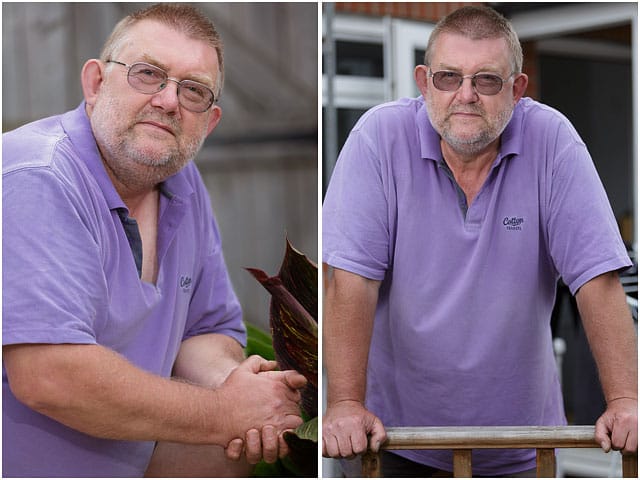
What sort of conditions are necessary for growing cacti?
They prefer not to be too wet, but the majority of cacti will survive a cold greenhouse. A small amount of cacti from hotter climates such as northern Brazil and most of the other succulent plants, won’t survive persistent low temperatures or freezing, whereas a good majotity of cacti will. Don’t forget that cacti, growing at altitude, will be under snow for three or four months of the year. A lot of the places, in the United States for example, the snow sublimes, it doesn’t melt. It’s so dry, the snow evaporates into the air straight away. There is some snow melt, supplying much-needed water for the desiccated cacti, but in some places the majority just goes into the atmosphere.
Sublimation is the transition of a substance directly from the solid to the gas phase without passing through an intermediate liquid phase.
Are you selective about what you grow?
Nope, I grow anything and everything related to cacti. A lot of the plants have the added bonus of being architectural, as you can see by the leaf shapes etc.
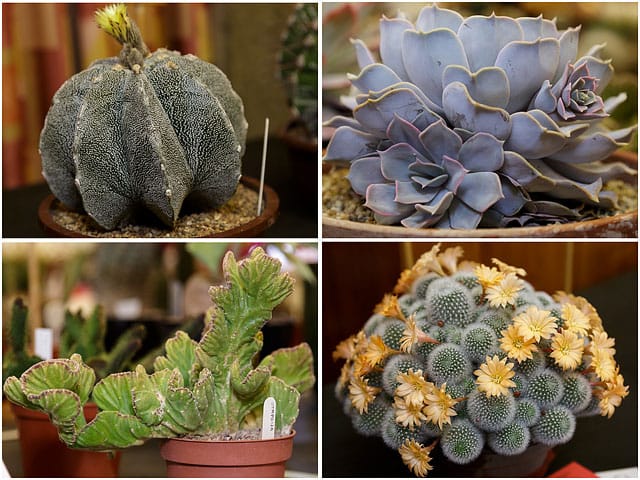
[Top-L].Astrophytum X myriostigma (hybrid) [Top-R] Echeveria lilacina
[Bottom-L].Euphorbia sp. Cristate [Bottom-R] Rebutia sp.]
That’s like asking me to pick a favourite child [laughs]. So no, I couldn’t really say which, if any, would be my favourite.
That’s an unusual plant (Monkeys Tail) – Hildewinteria colademononis (Cleistocactus winteri ssp. colademono)
It’s a relatively recent discovery and it wasn’t discovered in habitat either. Some guys passing through a village in Brazil and saw it hanging outside of peoples’ houses. [This needs to be wet all the time]
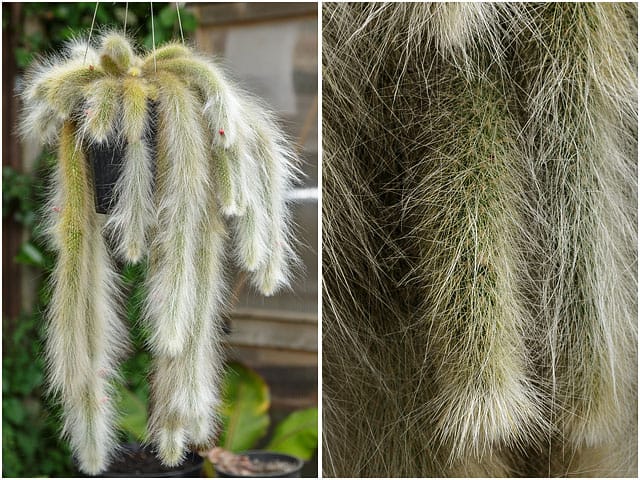
No [laughs]. It’s actually the potting mix that does the damage as it’s so gritty. Working with it wears the skin away, so it never gets a chance to harden. In fact, not that long ago, I spotted that I had a hole in one of my nails. It was from constantly brushing the bottom of the potting station tray, when mixing the gritty potting medium, that had caused the hole. So I wear gloves for protection now when mixing up a big batch.
I couldn’t get the greenhouse that I wanted, so I built my own.
So this is home then?
Yeah, the greenhouse is hermetically sealed and frost free. During the winter I keep the frost at bay with a small tick over heater.
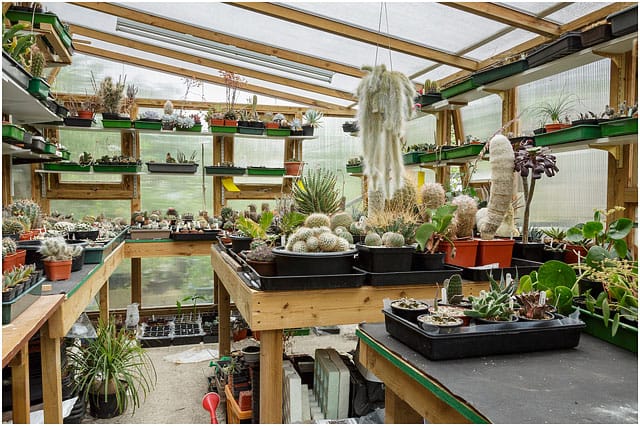
Which is the oldest plant that you have?
Oooooh, that’s a tricky one. I don’t really know, to be honest. I did find one that I hadn’t repotted for twenty-three years. It was suffering a bit, but soon revived when I gave it a new home. So you can see that they are fairly robust. The Denmoza rhodacantha is a likely candidate. That was seeded in 1983, so that’s thirty-one years.
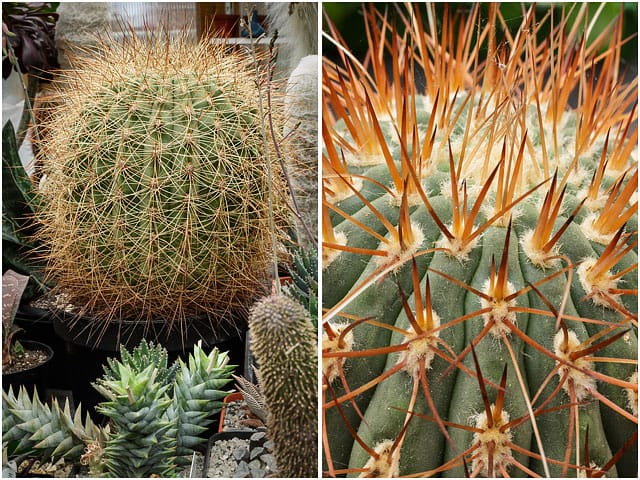
A lot of people put them in a really poor soil mix and restrict their root growth so they can have more plants in their collection. But as far as I’m concerned, they have to grow [laughs]. Of course, that’s the problem with potting-on; ever increasing size.
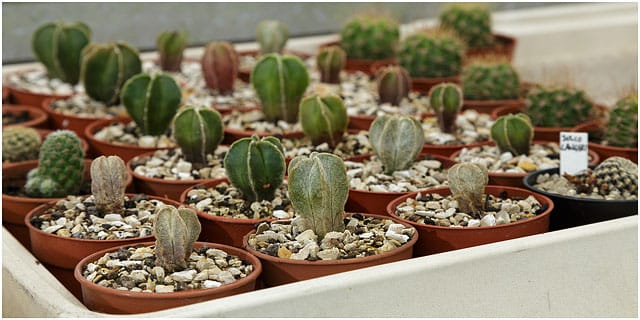
Do they have flowering seasons depending on where they are from?
The majority of plants from the Northern Hemisphere will flower in, what we know as, spring. Some, such as the Ariocarpus, which suck themselves into the ground, flower in the autumn. That’s one of the reasons for our planned return to Mexico in October, to see them in flower. It’s bizarre, nobody has successfully explained why they flower at that time. It’s one of those weird happenstances of the plants that we grow.
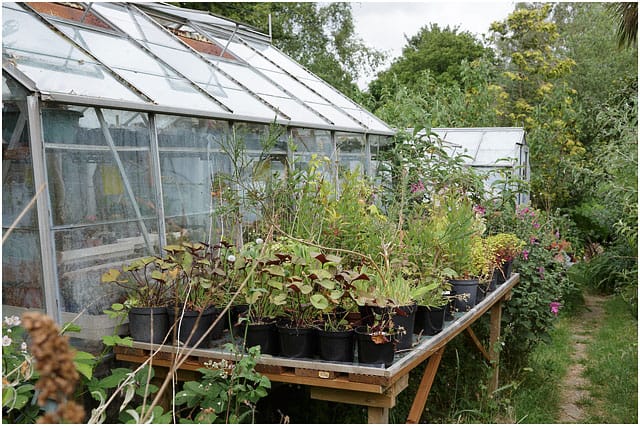
You have an amazing variety, just in this greenhouse alone.
That’s one of the attractions. The common or garden variety, of what most people think of as a cactus, are what we refer to as the ‘Women’s Institute’ (WI) plants, Echinopsis eyriesii and the like. I use them for grafting, they produce offsets (pups) like there’s no tomorrow, which is why they are so popular and can always be found in the WI. Hence why it got the nickname of the ‘WI plant’.
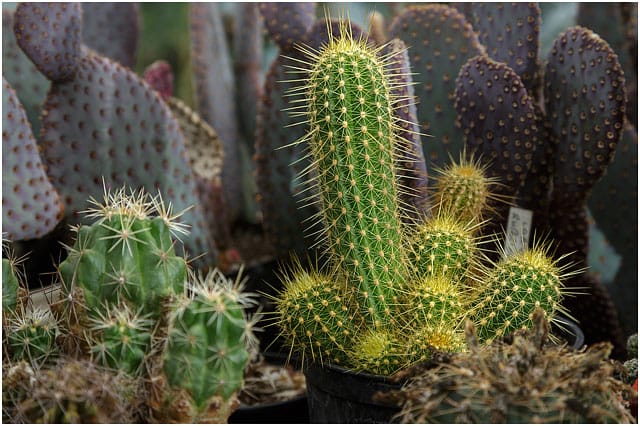
leucanthus ssp. schmollii; right Echinopsis (Lobivia) huascha ssp. rubriflora.
Is the grafting technique similar to that for trees?
Yep. You select a vigorous root stock and take off the top, a bit like eating a boiled egg. Then take the top off of the plant that you want to graft, the scion, and marry the two halves. The main thing is to make sure that the vascular bundles, the plants nutrient channels that run up and down the plant, actually connect. Occasionally you’ll get a duff one, but, sometimes, you can get some interesting ‘happy accidents’, like tissue mixing. We call this a chimera, which is where cellular material from both the grafting stock and the scion will almost intermingle genetically, and produce some weird hybrid plant. That’s not that uncommon.
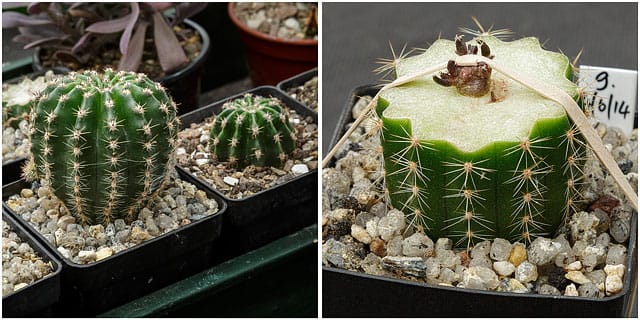
How long does it take for the graft to take?
About seven days, so you know fairly quickly whether it’s a success or not. The elastic bands hold the two halves together to ensure the vascular bundles have a good chance of connecting. That plant from the 1980s is a grafted plant. 1984 seed, grafted in 1986.
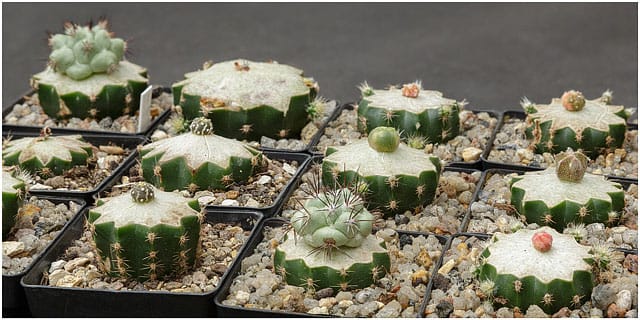
How many hours a day do you put into looking after them?
Too many [laughs]
Web Links and References of interest
http://www.bcss.org.uk/
https://www.facebook.com/Cactus.Succulent
https://twitter.com/CactusSucculent
http://www.bcss.org.uk/foruma/




